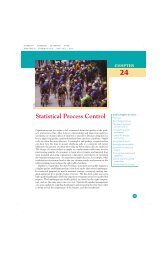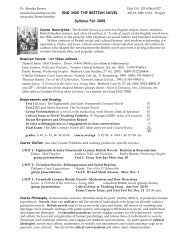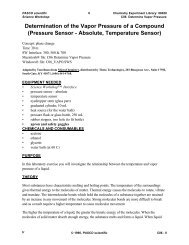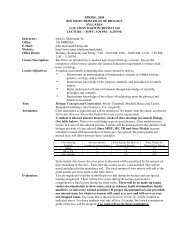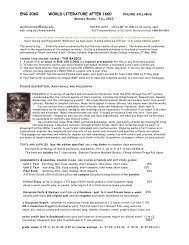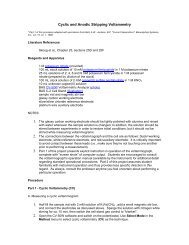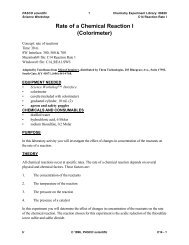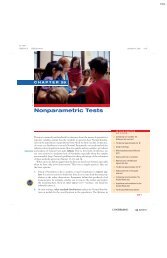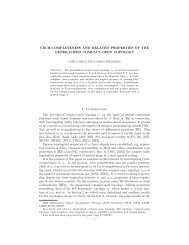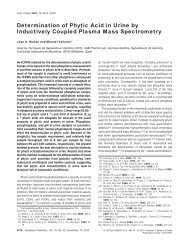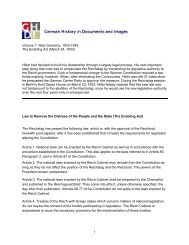CHAPTER 27 ⢠Statistical Process Control
CHAPTER 27 ⢠Statistical Process Control
CHAPTER 27 ⢠Statistical Process Control
Create successful ePaper yourself
Turn your PDF publications into a flip-book with our unique Google optimized e-Paper software.
<strong>27</strong>-28 <strong>CHAPTER</strong> <strong>27</strong> • <strong>Statistical</strong> <strong>Process</strong> <strong>Control</strong><br />
We get control limits from past data by using the estimates x and ŝ in place of the<br />
and used in charts at the process-monitoring stage. Here are the results. 12<br />
x _ AND s CONTROL CHARTS USING PAST DATA<br />
Take regular samples of size n from a process. Estimate the process mean and the<br />
process standard deviation from past samples by<br />
mˆ x<br />
ŝ s<br />
c 4<br />
(or use a target value)<br />
The center line and control limits for an x chart are<br />
ŝ<br />
UCL mˆ 3<br />
1n<br />
CL mˆ<br />
ŝ<br />
LCL mˆ 3<br />
1n<br />
The center line and control limits for an s chart are<br />
UCL B 6 ŝ<br />
CL c 4 ŝ s<br />
LCL B 5 ŝ<br />
If the process was not in control when the samples were taken, these should be regarded<br />
as trial control limits.<br />
We are now ready to outline the chart setup procedure for elastomer viscosity.<br />
Step 1. As usual, we look first at an s chart. For chart setup, control limits are<br />
based on the same past data that we will plot on the chart. Calculate from Table<br />
<strong>27</strong>.5 that<br />
s 1.0065<br />
ŝ s<br />
c 4<br />
1.0065<br />
0.9213 1.0925<br />
The center line and control limits for an s chart based on past data are<br />
UCL B 6 ŝ 12.088211.09252 2.281<br />
CL s 1.0065<br />
LCL B 5 ŝ 10211.09252 0<br />
Figure <strong>27</strong>.12 is the s chart. The points for Shifts 1 and 6 lie above the UCL. Both<br />
are near the beginning of production. Investigation finds that the reactor operator<br />
made an error on one lot in each of these samples. The error changed the viscosity<br />
of that lot and increased s for that one sample. The error will not be repeated now<br />
that the operators have gained experience. That is, this special cause has already<br />
been removed.



